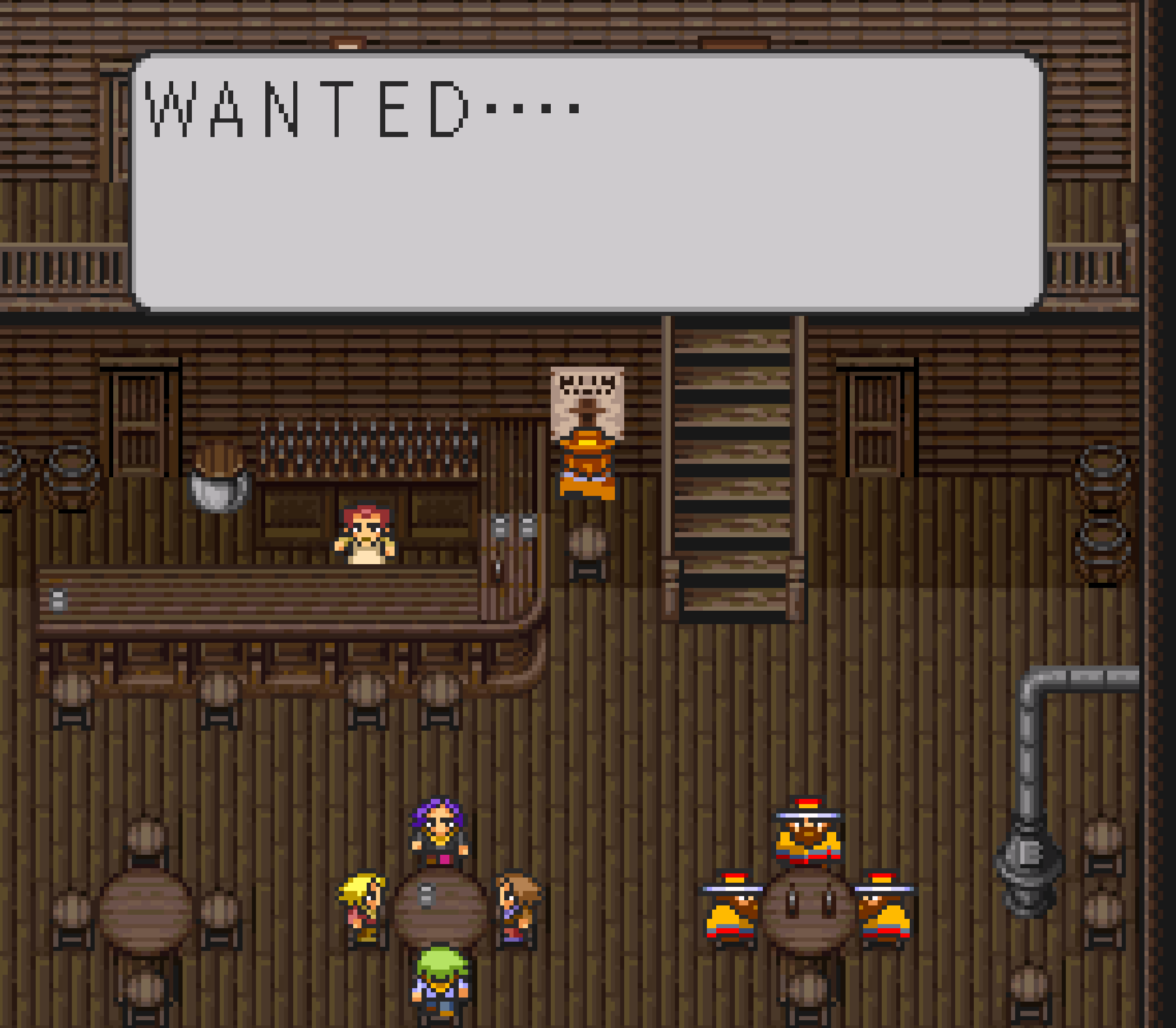
1. Western: I refer you to Doom Horse for further explanation. It's a spoiler, but the climactic...plot development is one of the best things video games has had to offer. Even outside that brilliance, this is the tightest and smartest of the scenarios, the perfect encapsulation of the Live A Live approach: it takes a core-yet-overlooked aspect of RPG gameplay, ransacking a town and talking with the townfolk, and turns it into a game of its own, exploring and celebrating the convention while dismantling it at the same time. In a few hours, a band of 13 outlaws is coming to raze a frontier village to the ground. Under a time limit, you, a Man with No Name desperado dragooned into the town's defense, have to scour the town's treasure chests, nightstands, and other lootable locales for materials and assign a ragtag bunch of villagers to set up makeshift traps - which they will do at varying speeds and with varying degrees of success, so make sure you've gauged their abilities and competence appropriately. Each successful sabotage means fewer cowpokes opposing you at the high-noon showdown and better odds at making it through a potentially-crowded boss battle in one piece.
I love this chapter's sharp, satisfying central mechanic, where success in one task turns into deliverance in another - centering on taking the chapter's single, seemingly-impossible battle and systematically, through wits and grit, turning its odds in your favor. It has the coolest hero. There's great humor. It's funny and tense and smart all at the same time. There's even a neat twist, with the reward of an additional joke, for the attentive at the end. A stellar turn all around.

(Two gripes: a) the combat sprite for the ape sidekick hews a bit too close to golliwog imagery and should be edited, and b) I know this is dog-eat-dog prehistoric times, but did the first enemy have to be puppies?)
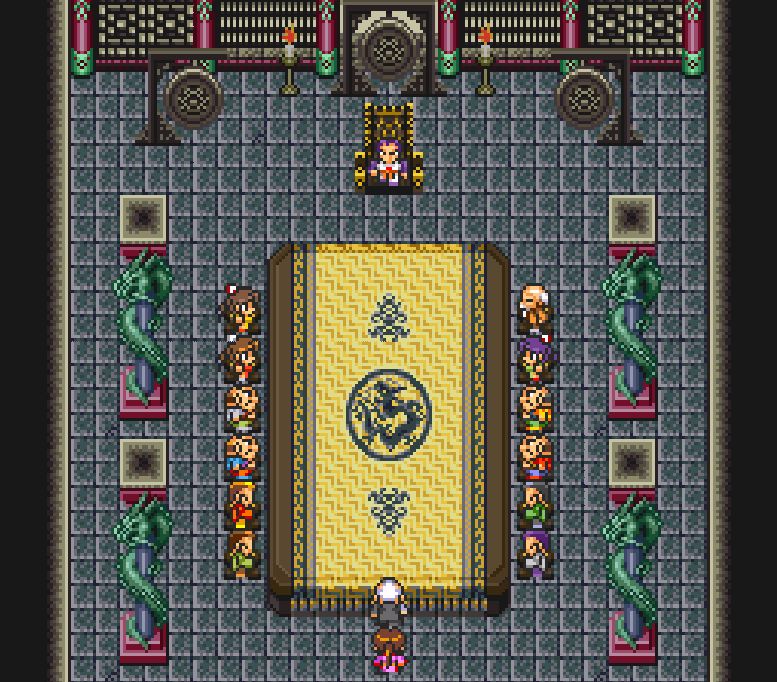
3. Kung Fu: A kung-fu movie in RPG form, and another chapter, like the Western one, that's giving the "all killer, no filler" version of a gaming story. Two drawbacks: 1) It's never communicated that you have to use a technique against one of your students repeatedly in order for them to learn it, and 2) you gain a lot of healing items whose effects aren't made clear until you need to use them, which, given the gentle difficulty curve, isn't until the final boss gauntlet, which isn't the time to be stabbing in the dark. But these are quibbles compared to the chapter's achievements. Your kung-fu master is an engaging hero, which is a particular accomplishment given that his dilemma - trying to find a successor to whom to pass on his craft before his aging body fails him - is not one with which gaming's typically-young player base can easily identify. The big passing-of-the-torch moment is perfect. Developments that might be dismissed as rote or maudlin if protracted pack punches all the more acute in the compact narrative. (What might have been a fairly standard climactic boss battle in other hands was a total "YOU'RE GOING DOWN" moment here.) You fist-fight tigers as your training foes. The final section has you wandering the halls of the enemy compound to reach an Enter the Dragon board meeting, with all the colorful henchmen lining up in turn to attack. You kick the villain through his throne into a gong at the end. This is why we pay video games the big bucks.
(Notes on heroes: The game wants you to choose Yun, but I went with Lei, and not because she's your only option for a female lead in the game - she has real initiative, and her long-distance kicks are really useful. You could make a case for all of the pupils, though - any of them has the potential to be a full-fledged hero, which makes developments hit home all the more. I particularly liked the Master's ahead-of-his-time body-positivity with Sammo, promising to show him how to use the size that others had disparaged as a strength.)
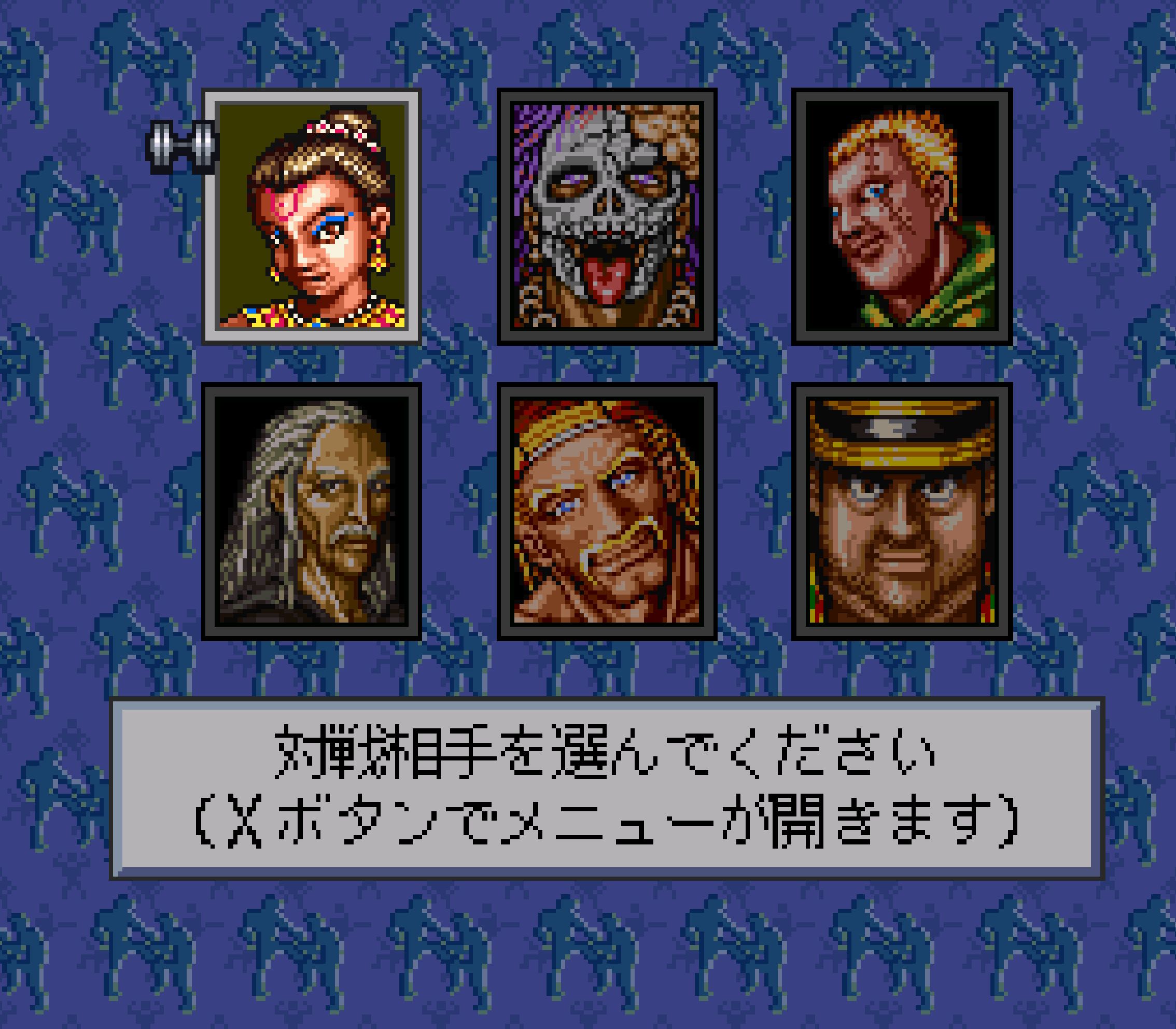
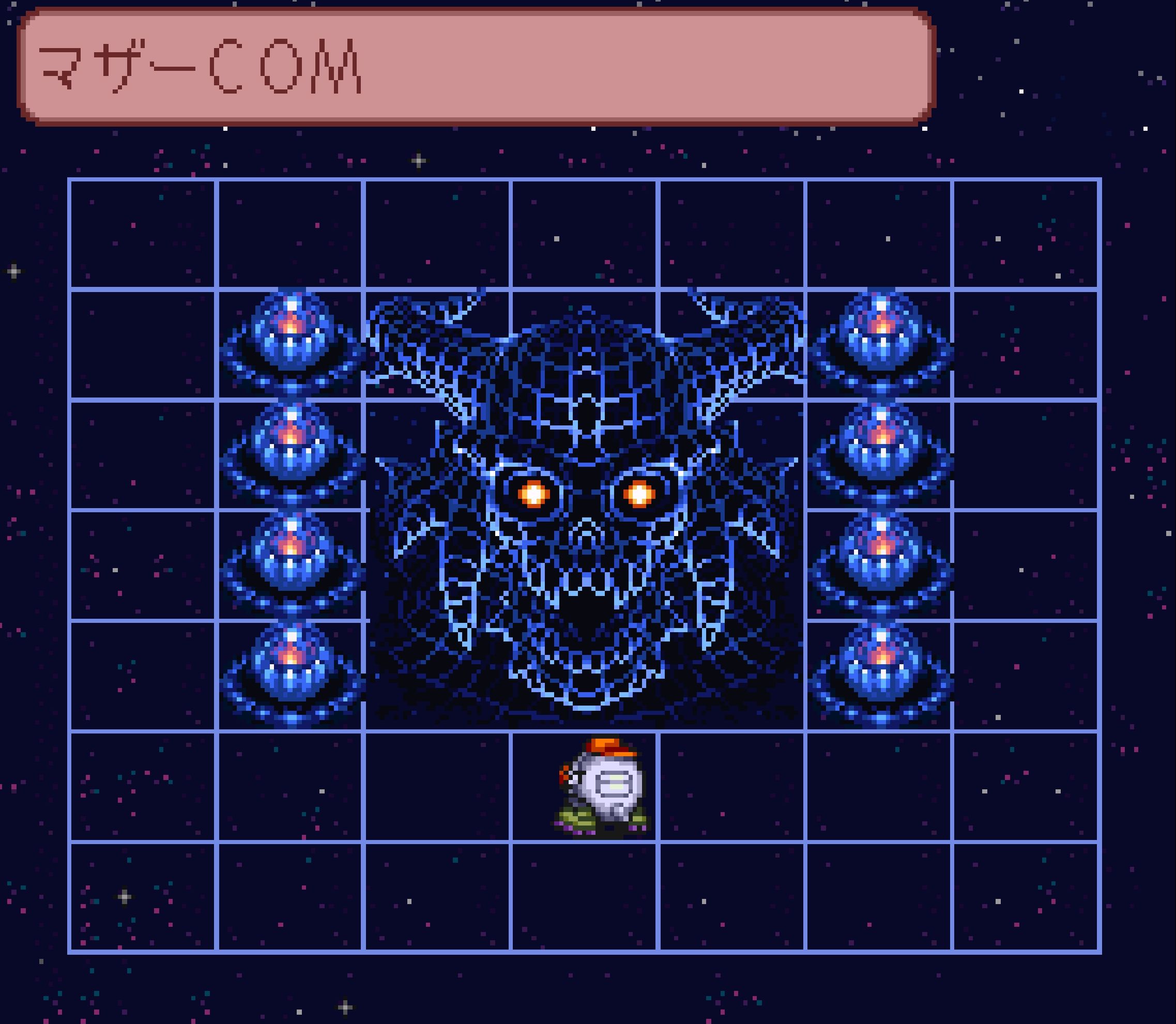
5. Space: It's a real pity the bulk of this chapter turned out how it did, as it features a charming protagonist, and it ends really well and unexpectedly, in ways true to the theme of the overall game. Unfortunately, what comes before is bloated and time-wasting in a game that, at its best, is anything but. It takes place in a poorly-designed, needlessly-sprawling environment that the chapter's obtuse, directionless puzzles require you to wander aimlessly. Too much of your time is spent reading not-very-interesting dialogue boxes and watching a very slow & depressing Death on a Space Station scenario play out that, except for the capable ending, is predictable and far too reminiscent of 7 Days a Skeptic for my liking. Even the mini-game is sucky and time-wasting, requiring you to find an additional item in an optional sidequest to avoid starting all over again with every loss. For the most part, there isn't even any music. This chapter seems like an eternity, and it fails in ways where other chapters succeed sparklingly, which makes those failures even more glaring. Again: it ends very well, and that counts for a lot. But not enough to pull it out of #5.
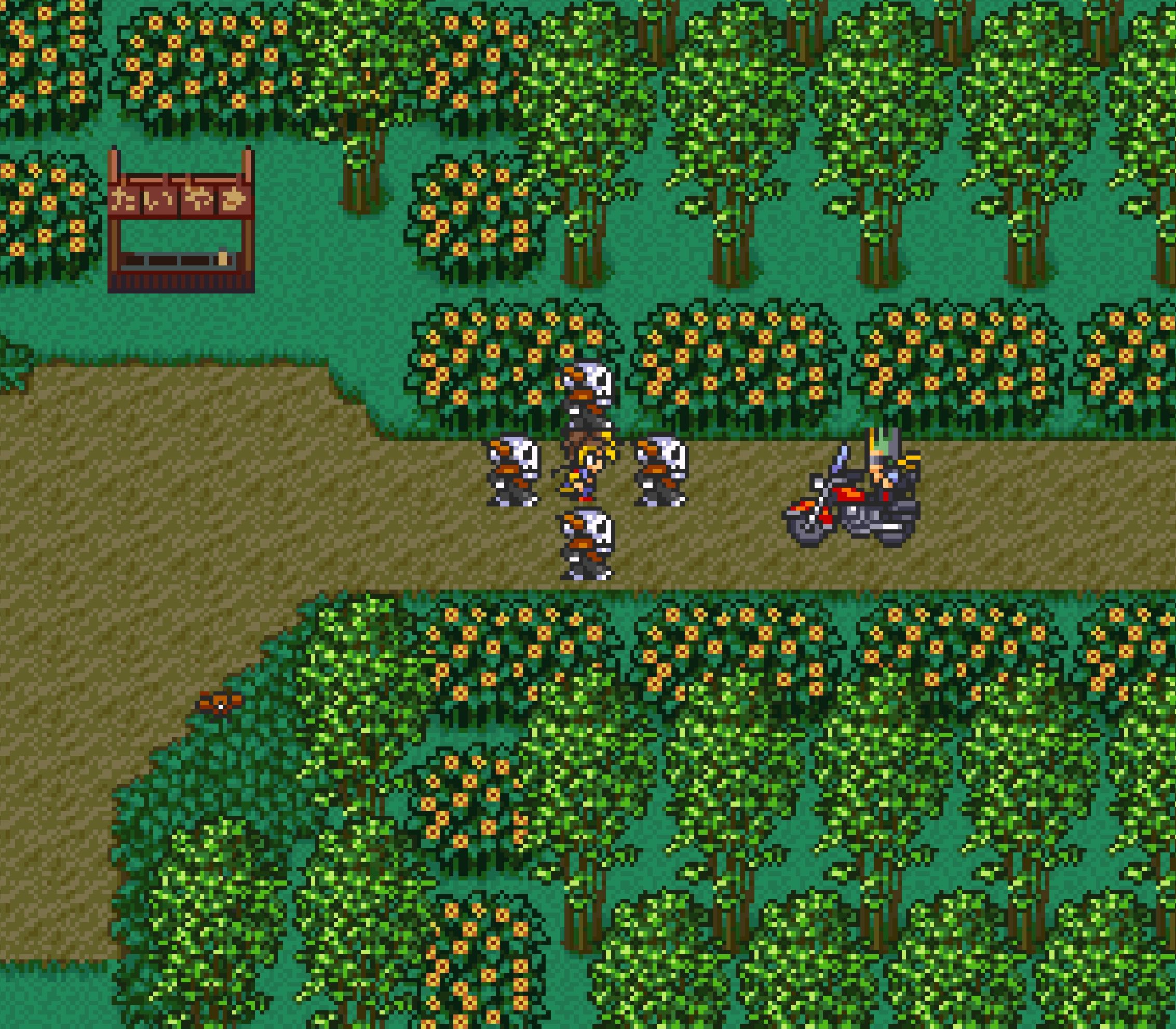
6. Anime: I kind of hate putting this so low, because it has some strong factors going for it. The sprite art for this chapter is top-notch, from the large enemy sprites later in the chapter to the colors in Toei's workshop to the park, which is one of the most beautiful RPG forests rendered in 16-bit. It's aggressively yet thoughtfully colorful; unlike the space chapter, your eyes will never get bored. How the game handles combat in its first half effectively and *thoughtfully* builds on its tale of a psychic weakling who decides to learn to use his powers to become stronger so he doesn't have to rely on his friends to protect him: each unique enemy formation (a new one for each level he gains) is a puzzle designed to teach him how to learn to use his latest power. The variety between exploring the environments and combat and evading, or trying to evade, enemies on the world map at least initially staves off the monotony that infects the space chapter. It has some sharp moments of humor, both riffing on RPG conventions and otherwise. (I liked the bit with the bar where everyone's blissed out on mushrooms and one of the patrons extolls how wonderfully the habit will clear your mind, yet reading the patrons' minds will reveal that they can think of nothing but the drug, and collecting it as an item will reveal that it actually dulls you so that you can't use your specials.)
This chapter also, however, has (save for the central problem of the last-place chapter) the strongest negatives, not the least of which being that it turns that "what the heck do I do?" factor from the space chapter up to 11. The kitchen-sink plot hugely exacerbates this problem. A few elements, right down to the hero's name, might suggest initially that it's going for an Akira riff, but it actually reveals itself as attempting the Ultimate Shounen Anime: plot elements include psychic powers, the hero's detective father getting murdered, marauding biker gangs, ancient mecha, mysterious government facilities, antics at the local orphanage, helping your sick sister, managing your friend's taiyaki stand, stealing panties, and reincarnating a pet turtle as a rock-'em sock-'em robot. Most of these plot elements could, conceivably, lead to a story, but for a long time, none of them actually do, which leads to a total lack of understanding as to what you're supposed to be goddamn doing: "what is my objective right now?" "wait, the taiyaki stand minigame is part of the plot?" "I'm supposed to be meeting that little kid who's stealing everyone's underwear repeatedly in the bathroom to get more and more panties? That's really my main objective right now?" This is aggravating when you have to wander an ill-designed spaceship. It's downright intolerable when every mistake in identifying your next destination means you have to plow through two or three fights - that will be absolutely identical, by the way, as you will reach the level cap through this nonsense, and the concept of enemy formations that change every level also means lack of change in those formations once levels run out.
On top of it all, the destination of the sci-fi story, which revolves around liquefying humans, is just gross and unpleasant, and there are no moments like the end of the space chapter to elevate the material. The hero is a marked downgrade from that chapter, too. Also, did I mention a non-negligible portion of the game revolves around kids stealing women's panties?
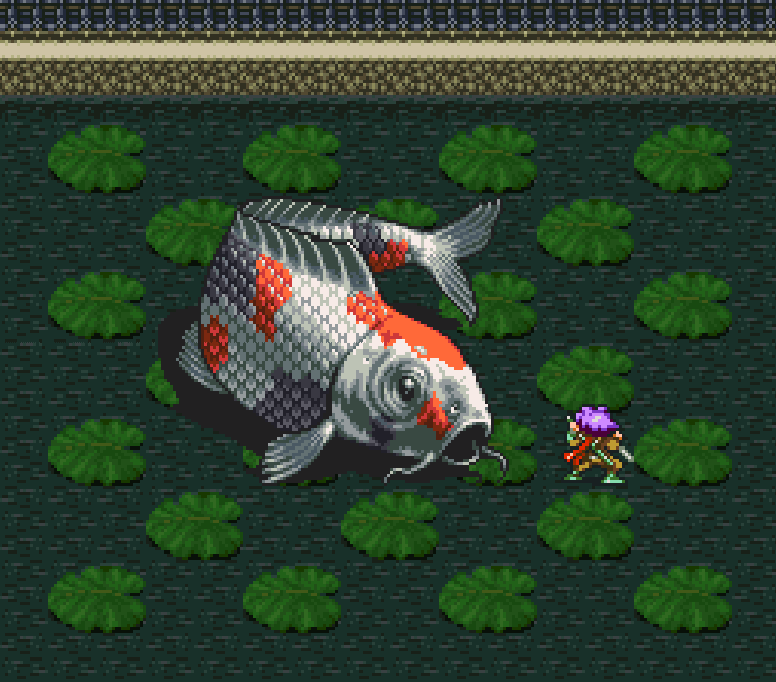
7. Ninja: By rights, this should be at #5. I admire the designers for creating this intricate puzzle box in a relatively small space, hinging on a mix of gameplay combining stealth, timing, exploration, observation, and puzzle-solving, with a great deal of optional content and lots of added complexity and changes in the optimal approach to gameplay if you're going for all or no kills. (It's almost a proto-Hitman level.) It's too involved for its place as part of an anthology of short RPG stories; it's almost as if it this adventure comes from an earlier version of the game, where each individual chapter ran much longer, and the creators were reluctant to pare what they'd made down to a more manageable size. That is, though, only because there are so many good ideas on tap here.
However. However however however. Two-thirds of the way through, the chapter turns into a gauntlet of kaizo bullshit that utterly does not work in an RPG format, where almost every single challenge is an instafail with nasty, prankish failure triggers where the penalty is death, a lockup state, or getting kicked back to earlier in the compound and ten minutes of backtracking. It's a chapter with numerous aggravations before this point: the camouflage cloak that's nearly impossible to use, since the enemy soldiers move so quickly and erratically; the bell that sounds every minute or so that grinds gameplay to a halt so your character can note its tolling for use in a password puzzle; the boss that spams a Curse attack so quickly that you can hardly get a hit in. Then you start getting occasional unmarked pitfalls - random tiles in the floor, unassuming doors - that send you all the way back to previous levels, just as a mean prank on the player, as well as pit trap gauntlets, where the traps are visible but require split-second timing, where one false move drops you into imprisonment in a dungeon. It also eventually becomes impossible to tell how well you'll fare against an enemy prior to engaging, as a genocide run will get you way overleveled, but a total sneaking mission will keep you at level 1; the devs had no idea where you're falling between those extremes, so while there is a curve to combat difficulty, you can often wind up in scenarios where you'll just get smashed and have to backtrack if you've been insufficiently gung-ho. It's annoyance after annoyance, reset after reset and piles of wasted time - and then, at that two-thirds mark, the devs go all-in on this garbage, and you have to save literally every minute to make progress - sometimes, even more often than that.
I was emulating and using save states, and I found this nearly unbearable. I cannot imagine how it is on original hardware. As overused and flat-out whiny as the word "unplayable" is, I would have to say it would apply here. (This is not counting the final boss, who not only has the spamming issue from earlier - stop gameplay for poison attacks! stop to note poison damage! stop to note poison field damage, which is an entirely different thing! - but, unlike any of the other final bosses, is also a huge leap in combat difficulty from the rest of the chapter and will likely require you to backtrack to level up, no matter how you've played the game or fared so far. Use the whirlwind attack that negates some specials if you have it. Otherwise, forget it. I thought all the different special one-use attack items I had collected through thorough exploration would be the key. It turns out they all do 1 damage. Ha, ha.)
The devs took so many risks that I suppose it was inevitable one would blow up spectacularly, though so much of the rest of the game is so smart that I would not expect a miscalculation this massive. They had more than enough actual good ideas to fuel the chapter! They didn't have to do this! As it stands, though, it's a spiteful roadblock, mud in the eye of what is at its best an aggressively smart, streamlined game, and it's a pity that the many thoughtful aspects of design and the high production values the chapter has to offer (look at that fish! LOOK AT IT!) aren't allowed to shine as brightly as they could as a consequence. Live A Live is overall well worth your time. But pack a lunch for this bit.

